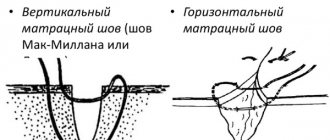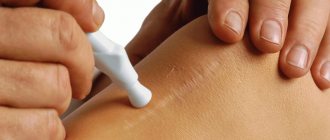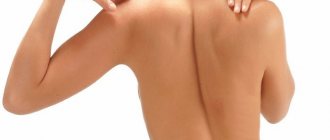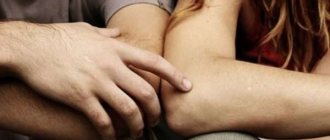No one is immune from the appearance of foreign tumors on the body - rashes, wen, acne, moles, papillomas, etc. Some of them are absolutely safe and do not pose any harm to health, while others can provoke the development of quite serious diseases, even cancer .
Subcutaneous bumps can appear anywhere: on the legs, arms, face, including the cheeks and other parts of the body. As a rule, their occurrence is noticed after the neoplasm reaches a large size.
Types of subcutaneous bumps
This is a seal that comes in several varieties. Some of them appear almost instantly - within a few hours, others are characterized by slow growth, so their increase in size can be noticed only after a certain amount of time. In any case, if you notice a thickening under the skin, you need to monitor its behavior and, if necessary, consult a doctor. This symptom should not be ignored, since a subcutaneous lump may be the first sign of an incipient disease.
The most common types of subcutaneous neoplasms are:
- A fatty tumor or lipoma is a benign neoplasm that consists of fat cells. It has clear boundaries and is soft to the touch. It can appear on any part of the body (back, shoulders, elbows), without having any effect on the internal organs. The tumor has its own capsule.
- Hygroma. This is an absolutely safe lump, one of the types of cysts. The lump on the hand under the skin (on the wrist) looks like a ball or lump. Hygroma is the result of the accumulation of fluid between tendons that are constantly under tension, and therefore most often appears on the hands.
- Lumps on the leg under the skin. If such a lump appears, you should immediately consult a doctor and undergo an examination. A neoplasm on the lower leg may indicate the development of quite dangerous pathologies.
- Joint nodes or growths. These are immobile, hard neoplasms that accompany the development of gout or arthritis.
- Cyst or atheroma. It is formed as a result of blockage of a violation of the outflow of secretions secreted by the sebaceous glands. The fluid gradually accumulates and forms a lump, shaped like a cyst. The neoplasm has a capsule filled with a thick mass. Most often, atheroma appears in places where sebaceous glands accumulate and near the hairline. May spread throughout the body. Threatens the development of the inflammatory process and suppuration.
- Painful lumps. Appear within a few hours due to an insect bite, bruise or infection under the skin (through a cut, scratch). In this case, there may be an increase in body temperature. Such bumps are treated quite quickly. If the lumps appear as a result of an impact, long-term therapy may be required.
Treatment options for eyebrow bumps
Swelling in the eyebrow area can occur for various reasons. It can be eliminated both at home and in a beauty salon. The first option is simpler and more accessible. Do-it-yourself remedies for eyebrow bumps are usually inexpensive and easy to use. The disadvantage of this method is that the effect is not strong enough. Also, due to unprofessionalism, there is a high risk of side effects.
Removing swelling in a beauty salon is a more effective way. Specialists will easily select individual procedures and products that will allow you to quickly and effectively remove tumors. Most often, trips to beauty salons are an expensive pleasure; not everyone can afford to repeat them often.
Important! It is necessary to carefully choose both the salon and the specialist.
Features of formations on the hands
A harmless neoplasm most often appears on the hand, in particular on the wrist, called a hygroma. It usually develops near tendons and joints, in places that are often subject to injury. In some cases, hygroma develops due to hereditary characteristics. Most often, the disease affects young women aged 20–30 years. Experts attribute this to the constant stress on the hands of a young mother when she is carrying a baby.
If the cyst is hidden (under the ligaments), it can only be detected in the clinic, where the patient comes with complaints of pain in the wrist joints that occurs when flexing the hand.
Basically, subcutaneous tumors in this area do not cause pain; pain can only appear with pressure or as a result of mechanical impact.
Hygroma often occurs in the following areas:
- On the palm, near the thumb. In such cases, pain is noted when squeezing and loading.
- Near the base of the fingers. As a rule, such neoplasms are small in size and quite painful.
- On the finger phalanges (one or two). Since there are many nerve fibers in this area, the seals here are quite painful.
- On the front of the foot near the shin or on the back side.
Causes of lumps on the hand
Soft, dense tumors are most often found near small and large joints. They can form as a result of mechanical impact (impact, bruise, etc.), prolonged monotonous load on these areas, or an inflammatory process occurring in them.
In older people, such formations can develop against the background of an accumulation of connective tissue fragments near tendons or joints.
Lumps usually appear on the outer surface of the hand, which is constantly in a tense working condition. This may be due to heavy physical labor, as well as constant work on the computer.
If you shine a flashlight on a subcutaneous lump in complete darkness, you can discern some iridescent substance resembling a gel.
Symptoms of hygroma
The tumor develops quite quickly. First, a small compaction appears, which soon turns into one or several bumps located close to each other. The process may be accompanied by mild pain, which is often characterized as a dull ache. If the lump presses on tendons, nerve fibers or blood vessels, the pain may intensify, which significantly impairs the quality of life. The dimensions of the neoplasm reach 3 cm.
Other signs include:
- the surface of the hygroma is dense and rough or completely smooth;
- the tumor is motionless, as it clings to neighboring tissues;
- as a rule, at the initial stage of tumor development, there is only liquid in the hygroma capsule;
- In the future, blood clots may appear, like small balls.
Although this is an absolutely safe neoplasm that does not develop metastases, it is still better to cure it. Firstly, it looks rather unaesthetic, and secondly, it still causes some discomfort that interferes with normal life activities.
Therefore, it is better not to postpone a visit to the clinic, especially if the lump begins to increase in size.
Contact a specialist
If a lump under the skin appears on your stomach, legs and arms, buttocks or back, you should definitely visit a doctor and undergo an appropriate examination. If necessary, the surgeon may refer the patient to a dermatologist or oncologist.
In such a situation, you should never self-medicate, as this can lead to serious complications, the development of inflammatory processes, as well as severe irreversible consequences.
Advice from experienced doctors
In order to prevent the appearance of bumps on the eyebrows and speed up their treatment, you must follow the recommendations of doctors:
- Dress warmly, try to catch colds less often, and treat colds in a timely manner.
- Do not consume foods or contact surfaces that can cause allergies.
- Protect yourself from insect bites and spray with chemicals.
- See a doctor immediately after your eyebrow becomes swollen.
Under no circumstances should you squeeze out the cones yourself.
Lumps on the forehead above the eyebrows can be easily eliminated using special products and procedures. Removing a tumor above the eye under the eyebrow is much easier when the cause of its formation is known.
Treatment of neoplasms
Often people turn to the doctor when a tumor that has appeared under the skin begins to hurt. After all, it is quite difficult to notice the moment the lumps appear: at first the tumors are small in size and do not bother the owner in any way.
Although there are many recommendations for getting rid of subcutaneous tumors, the most effective and reliable method is removal. The fact is that non-surgical methods of treating such tumors bring only temporary relief, after which the pathology reappears.
There are the following methods for removing subcutaneous bumps:
- Radio wave method. The formation is removed on an outpatient basis, the scars remaining after the operation resolve within 2.5-3 months.
- Using a laser. The subcutaneous seal is instantly removed, while the integrity of the surrounding tissue is not compromised. The advantage of this method is the absence of a rehabilitation period for scars.
- Liquid nitrogen is used to cauterize lipomas. This leaves a scar.
If the pathological compaction has reached a large size, it will have to be removed only in a hospital setting, using a regular scalpel. Before surgery, the doctor prescribes anti-inflammatory therapy for atheroma to prevent pus from entering the bloodstream. Naturally, after such an operation a long rehabilitation period will be required. Open intervention is also indicated for the formation of a malignant tumor.
At the first signs of a subcutaneous neoplasm, it is imperative to carry out diagnostic measures and undergo the necessary course of treatment. Do not try to determine the type of tumor and prescribe therapy yourself. The diagnosis should only be made by a specialist based on the studies performed.
Causes
There is an opinion that dermatological diseases occur mainly due to insufficient or improper skin care, but this is not entirely true. This reason is one of the common ones, but there are others. These include:
- Hormonal disorders, diseases of the endocrine system.
- Lifestyle, nutrition, bad habits.
- Use of low-quality cosmetics and care products.
- Metabolic disorders, including chronic diseases, such as diabetes.
- Infectious, viral diseases.
- Injuries. Subcutaneous bumps on the face after a blow can occur not only in the form of bruises, but also as other structural seals. These can be infectious formations, cystic, and so on.
If you determine the root cause, you can not only select the optimal treatment method, but also prevent the appearance of new lesions.
Which doctor should I contact?
As a rule, such a neoplasm has a high growth rate. It can develop up to two centimeters in diameter in just a week, and sometimes even more.
An additional unpleasant symptom is that the bump on the cheek causes a person extremely painful sensations, starting to bleed and acquiring a convex shape. Against the background of all this, the color of the mucous membrane can vary from bright red to a pronounced purple hue.
After a biopsy, such patients may be prescribed the following types of therapy:
- Carrying out surgical treatment of a bump on the cheek under the skin. For this, electronic scissors are used, and immediately after removing the tumor, the affected area is cauterized. Therapy is continued with a course of antibiotics.
- Injection treatment. It involves special injections containing alcohol, which are given directly to the area of the granuloma.
- Performing laser treatment.
- Local injections using aletretin gel.
So, a bump appeared on my cheek. Regardless of the size of the pathological growth, one should not delay going to a specialist, this way a person can quickly feel comfortable and avoid all sorts of complications.
Many patients are not only unaware of how to treat a lump on the inside of the cheek, they are not even aware of which doctor to consult. You should make an appointment with the following specialists:
- First of all, you should go to a dermatologist. This specialist will certainly help you cope with such seals, be it a wart, lichen, papilloma, and so on.
- Often, a surgeon is consulted for the removal of a benign tumor and for the treatment of purulent inflammation.
- To an oncologist. After examination and receiving test results, the doctor will be able to exclude the presence of a malignant tumor.
But first, it would be better to consult a therapist. After the initial examination, the specialist will write a referral to a doctor of a more narrow specialization.
If a lump appears on the cheek in the mouth, treatment should be timely and comprehensive.
With formations such as hygromas, bumps on the finger, or painful nodules on the cheekbones in men, you need to contact a general practitioner - a therapist, family doctor.
If a nodule appears inside the skin after surgery or opening a pimple, a consultation with a surgeon is necessary. The same applies to dark blood bumps.
Nodules under the skin of the penis are a reason to consult a urologist. Protrusions on the genitals in women may indicate a viral infection - the problem is dealt with by gynecologists.
If necessary, the patient is referred to an infectious disease specialist.
“Lump” or “ball” near the ear are, of course, non-medical terms. These words mean a voluminous formation, the nature of which remains to be determined. And to clarify the pathological process, the doctor needs to conduct a clinical examination: questioning, examination, palpation.
Furuncle
A lump on the cheekbone next to the ear may be a boil. This is an acute purulent inflammation of the hair follicle. At first it looks like a small focus of infiltration with the following manifestations:
- Redness.
- Swelling.
- Soreness.
Next, the boil takes on a cone-shaped appearance, and a necrotic core begins to mature in it. This process is accompanied by an increase in local symptoms. The pain becomes more intense and can radiate to the ear or eye. With severe inflammation, the temperature rises and signs of intoxication appear.
A yellow spot soon forms at the top of the swelling - this is the accumulated pus trying to come out. The breakthrough of the boil is marked by the release of greenish contents with necrotic masses, which leads to an improvement in the general condition and a decrease in inflammatory symptoms. During the healing period, the wound is filled with granulating tissue, and a small scar remains on the surface.
Lymphadenitis
When the lymph nodes are involved in the inflammatory process, swelling also forms. Most often this occurs in the corner of the lower jaw, in front of or behind the ear. Lymph nodes react to any inflammatory process in the area of their functional activity: otitis and mastoiditis, tonsillitis, periodontitis, sinusitis, skin infections, etc.
Signs of lymphadenitis are mainly local in nature. These include the usual signs of inflammation such as swelling, redness and tenderness. The affected lymph nodes increase in size, and the skin over them becomes hotter. During an acute purulent process, an abscess forms in the thickness of the tissue, which leads to an increase in local symptoms and a deterioration in the general condition.
Sialadenitis
The parotid glands become inflamed quite often, which does not allow sialadenitis to be completely excluded. In such cases, a compaction appears, which becomes sensitive to palpation and is accompanied by pain. The latter intensify with movements:
- Chewing.
- Opening the mouth (talking, yawning).
- Turn your head.
The pain radiates to the ear, lower jaw, and temple. The function of the salivary gland is also impaired, which is manifested by hyposalivation (decreased secretion) and the appearance of pathological inclusions (mucus, pus, flakes). Acute sialadenitis is accompanied by fever and a disturbance in general health. On palpation, the gland feels dense; with suppuration, fluctuation (trembling) is determined in the center of the swelling. A complicated course of the disease is indicated by abscess formation, the appearance of fistulas, or stenosis of the salivary ducts.
Mastoiditis
Swelling behind the ear can indicate mastoiditis. This is an inflammatory process that affects the cave (antrum) and the cells of the mastoid process of the temporal bone. It is characterized by pain (including ear pain), swelling and sensitivity of the skin. Additional signs of pathology include:
- Headache.
- Fever.
- Hearing loss.
- Discharge from the ears.
There may also be a protrusion of the auricle anteriorly, and upon examination, pus is visible in the ear canal. The latter can break through the skin with the development of an abscess. This leads to increased swelling, redness and pain.
Lipoma or atheroma
A painless ball in front of the ears occurs with benign formations, for example, lipoma or atheroma. The fatty tissue is localized under the skin, is not fused to it, and has an elastic consistency. Its size is usually small, so it does not cause subjective discomfort (besides aesthetics).
We suggest you familiarize yourself with Cyst in the tooth canal treatment
Atheroma is formed in cases where the sebaceous gland duct is blocked. The secretion accumulates, stretching the walls, which leads to the appearance of a limited, mobile swelling. If the atheroma becomes inflamed, then signs characteristic of a boil or other purulent process in the skin appear: redness, pain, swelling, fever. The formed microabscess breaks out with the discharge of pus and thick sebaceous secretion.
Swelling of traumatic origin will be diffuse. It occurs after mechanical damage to tissue (usually a bruise) and is accompanied by pain, abrasions, and hematoma. Nosebleeds may also occur, and with severe injuries, patients experience dizziness, tinnitus, and headaches.
Insect bites are considered a commonplace situation, but it is necessary to exclude an allergic reaction or infectious consequences (ehrlichiosis, borreliosis, malaria, tick-borne encephalitis). If we are talking about signs of hypersensitivity, for example, after a bee sting, then, along with local swelling and redness, hives and itching will be a concern. More negative consequences are also possible, for example, Quincke's edema, bronchospasm, anaphylaxis.
Sometimes a lump near the ear should be considered a malignant process. Skin cancer can manifest itself in various ways:
- Lumpy wart.
- Pigmented spot.
- Flaky seal.
- A plaque that becomes crusty.
- Ulcer with foul-smelling discharge.
The malignant neoplasm is characterized by intensive growth, unclear boundaries, adhesion to the underlying tissues, and enlargement of regional lymph nodes. If the cancer becomes widespread, pain and signs of intoxication appear: weakness, emaciation, pallor, loss of appetite, low-grade fever. If isolated metastases appear, the function of the affected organs is also impaired.











